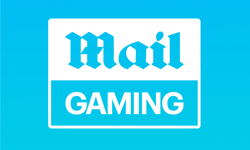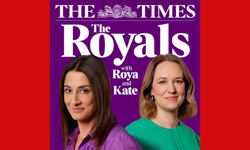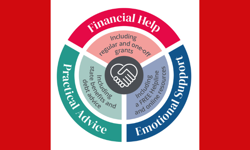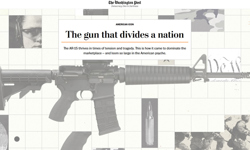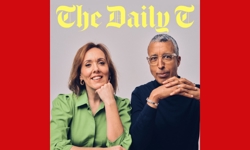The shape of specialist media businesses is changing. The scene was set with highlights from the Specialist Media Insights research among over 170 niche publishers, showing that consumer publishers expect digital to grow from 10% to 25% of their total revenues in the next two years, driven largely by web ads and subs, but with mobile contributing 6%. B2B publishers also expect digital revenues to increase share from 12% to 25%, and whilst web subs dominate for B2B, they are likely to catch up consumer publishers on mobile. Events are also a key growth opportunity for both, mostly live events for consumer but increasingly online and virtual events for B2B.
The focus on new digital channels is changing the very nature of the content that publishers must create. The shift to paid online subs for B2B is accelerating the move away from news and towards actionable, insightful content built on deep data and analysis. And consumer publishers are finding that the move to tablets is putting more emphasis on video content and forcing an increasingly interactive approach to design, more influenced by games and TV than traditional print. Plus articles are created in collaboration with an audience rather than crafted to perfection in isolation.
Multi-channel publishing is raising new issues for production workflow, especially when publishers have legacy systems in place. But digital channels can create a whole new source of data and insight into how content is consumed and how to target audiences for cross-promotion.
A real revelation for publishers is the international access they get with digital publishing and the level of interest in niche content from audiences worldwide. Slow growth in the UK is forcing many to look to China, Brazil, India and Russia as new prospective markets. The conference theme was "Think Niche, Act Global" and many of the speakers told stories of significant international sales from very specialist markets.
The greatest challenges for publishers are learning new skills and managing the investment required. But survey participants are aware that doing nothing is not an option, as free content providers and new entrants are multiplying, and established publishers must act fast to capitalise on their archive content and brand reputation.
Consumer publishers must experiment with tablets or be left behind
Tim Brooks, former MD at IPC, Emap and the Guardian, and now principal of 2 Riders Consulting, opened the Consumer Media panel session, with an exhortation to publishers to experiment, and warned against a wait and see approach.
Rebekah Billingsley, publishing director mobile, shared the experience of Immediate Media taking all its niche titles to tablets largely as PDF replicas. They have had 700,000 downloads to date, and now have extensive data to use to tune their products. They've learnt that bank holidays are a good time to promote, that halving price doesn't double volumes, and that a surprisingly high number of people are happy to read PDF replica magazines on smartphones. Immediate will use their new readership data to decide which titles to evolve into fully interactive iPad magazines.
Richard Walker, director of consumer revenues, shared Future’s experiences in moving into e-commerce, building on existing skills such as direct marketing and reader insight, and acquiring new ones such as multivariate testing, call centres and fulfilment.
Sam Spurdens of Loop Digital Media wowed the audience with the story of their transformation from a specialist print to a digital only publisher, changing their business from being UK-centric to becoming a global provider of iPad apps in the aviation sector. Key to Loop's success has been their video library and production expertise, which is now generating a lucrative stream of advertorials production for international aviation businesses such as Gulfstream. Dropping print has meant they can unleash the creativity of their design team and borrow ideas from new disciplines like gaming and TV.
Tony Harris of Boat International also saw the value of video, acquiring a production company to build an in-house unit that now creates video content for advertisers plus content for their website and tablet editions for superyacht owners. Their events business cements industry and owner relationships, attracts luxury sponsorship and makes a strong profit contribution.
The panel accepted that promoting on Apple Newsstand is a challenge, but using free samplers and incentivising notification sign-ups helps build a channel for cross promotion. Opinions were split on the replica vs interactive edition debate: Rebekah advocated PDF replicas to test the market, while Sam Spurdens believed that original, 4* plus rated apps get noticed and shared and open the door to advertising revenues.
B2B publishers must engage their audience with actionable content
Ben Heald, CEO of Sift, believes that large global organisations like Google will never do niche content as well as independent publishers. However, focusing solely on paid-for content risks leaving the door open for competitors: so publishers need a credible free content offering, including community activity and social media links. It's hard for publishers to charge for online communities; better to fund this via sponsorship. The whole business needs to move into a learning mode to keep up with change, and senior publishers must embrace Twitter and other social media platforms.
Marcus Wilkinson, publishing director at IDG, showed how niche publishers can generate good advertising revenue from free digital B2B services with a range of examples of creative ad solutions, including bespoke video webcasts, Twitter question of the day, custom editorial content and infographics, and bespoke search. IDG have created a separate creative solutions team to run these projects.
The explosion of new media channels creates a headache for editorial teams, and Peter Houston, director of content at Advanstar, set out some practical principles, to help prioritise activity, set new measures, and use social media to expand an article while it is being researched and created, to generate incremental content for new channels. He advocated the reuse and repackaging of archive, contributed and curated content to help editorial teams become more productive, using a memorable image of the Big Pig of Content.
Alex Martinez, MD of Sigaria has a "mixed economy" approach to his information and networking services for procurement professionals. With a base of free content, and a simple magazine subscription, they actively target key groups for trading up to their membership and premium membership tiers, with carefully constructed packages to entice them to upgrade and dedicated account management at each level.
In the panel discussion, skills gaps were a hot topic, with Jeska Harrington Gould, chair of SIPA Europe, advocating hiring multi-media graduates and Marcus Wilkinson raising the problems of hiring junior sales staff when it takes so long to train them to sell sophisticated commercial packages.
Working with the new gatekeepers: Apple and Google
Just a few years ago, publishers were focused on how best to work with Tesco, WH Smiths and Royal Mail. Now the new gatekeepers are Apple and Google, with Amazon in close pursuit. The final session of the day concentrated on tips for niche publishers to get their content out to a global audience.
Mike Goldsmith, editor in chief, mobile editions, of Future and Richard West, UK marketing director of Magplus (formerly of Apple) concurred that to get featured on Newsstand, publishers have to create innovative apps, promote via their own channels and ideally link to iTunes products - plus share their plans with Apple from an early stage. However, there are no guarantees!
Madhav Chinappa, a former BBC journalist and now head of strategic partnerships for news and magazines at Google, explained the fundamental clash of cultures between media businesses and the software development giant. He felt that there were great opportunities for niche publishers to use new products such as Google Currents to help their content reach a worldwide audience.
All the speakers were encouraging publishers to embrace new digital platforms and adopt a culture of experimentation, learning from the pioneers who are fully embracing tablets and online digital publishing, and gradually taking their audiences and advertisers on the journey. My two favourite quotes of the day are, "Don't wait and see, you'll be left behind", from Tim Brooks, and "Get the impression that those at #specmedia will innovate more magazine business models than any of the 'safer', bigger publishers", from Paul Bradshaw.
Missed the conference and want to learn more about what was said? We've created a special conference pack, with an in-depth summary of all the sessions, 25 top insights from the day plus PDFs of the speaker presentations and a digest of the Specialist Media Insights research. Price: £97+VAT. More details here or contact carolyn@thespecialistmediashow.com



